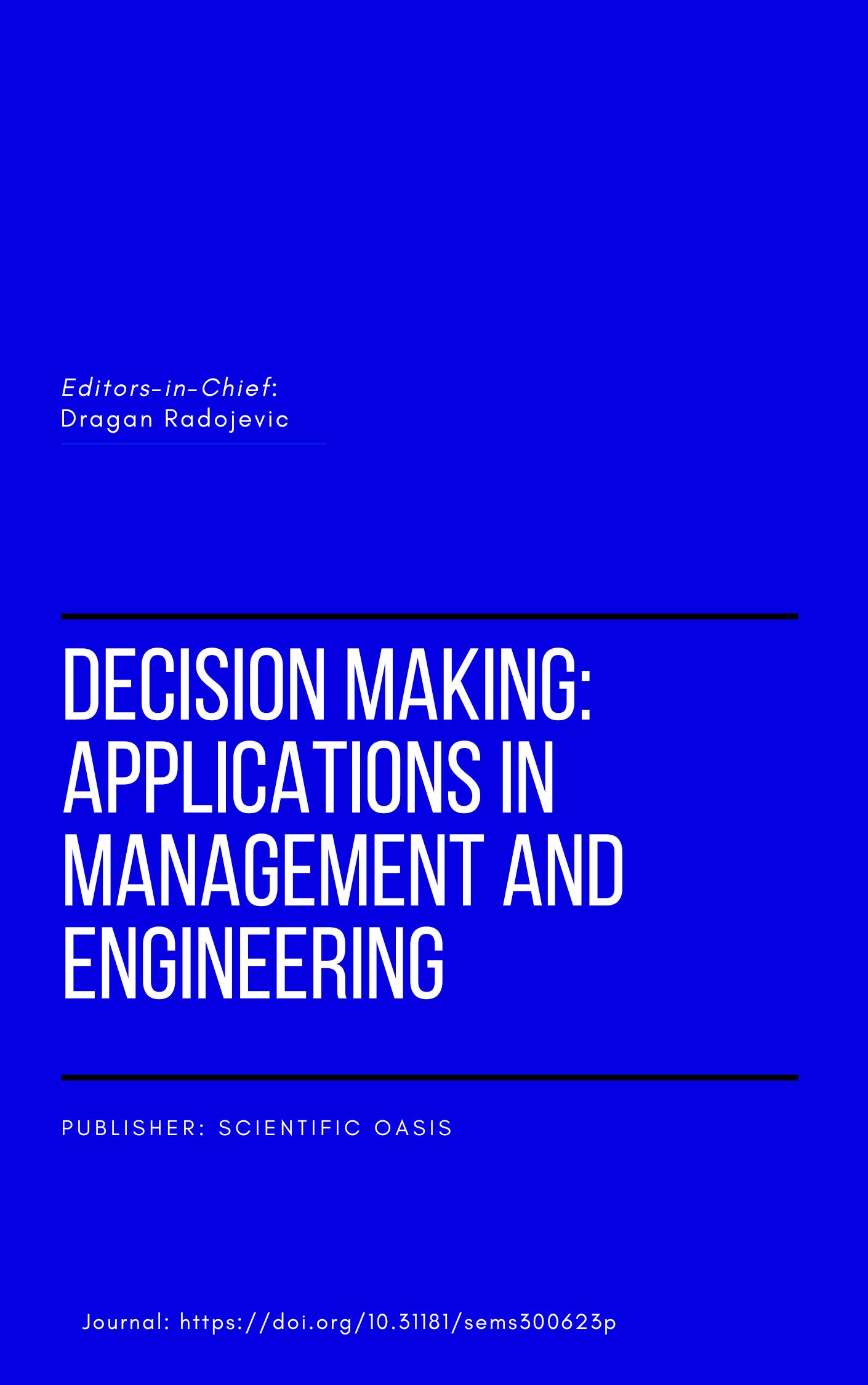An Empirical Study of the Relationship Between FDI and Ecological En-vironment Pollution-Panel Data Analysis Based on Shandong Province
DOI:
https://doi.org/10.31181/dmame8120251320Keywords:
Foreign Direct Investment Ecological Pollution; Integration Modelling; Green DevelopmentAbstract
As China’s economic liberalisation continues to advance, foreign direct investment (FDI) has emerged as a pivotal factor in driving economic growth. Nevertheless, with the rapid progression of industrialisation and urbanisation, the environmental implications of FDI, particularly in relation to pollution, have garnered significant attention within both academic and policy-making circles. Utilising panel data from 16 prefecture-level cities in Shandong Province spanning the period from 2016 to 2022, this study develops a hybrid model integrating Generalised Least Squares (GLS) and Gradient Boosting Regression (GBR) to investigate the influence of FDI on sulphur dioxide (SO₂) emissions and its non-linear dynamics. The findings reveal a multifaceted relationship between FDI and SO₂ emissions. In the initial stages, FDI inflows exhibit a positive correlation with SO₂ emissions, reflecting a "pollution haven" effect, whereas the anticipated pollution mitigation effects are not yet evident. After accounting for variables such as per capita income and industrial output, the impact of FDI on environmental degradation remains substantial, albeit moderated by regional policy frameworks and technological advancements. Importantly, increased fiscal expenditure amplifies the effectiveness of policy interventions in enhancing environmental quality, while technological innovation and financial investment collectively contribute to the reduction of pollutants. In conclusion, this study offers policy recommendations aimed at improving the quality of FDI inflows, bolstering governmental policy support, and facilitating the green transition of industries, with the goal of achieving a harmonious balance between economic growth and environmental sustainability.
Downloads
References
[1] Panayotou, T. (1993). Empirical tests and policy analysis of environmental degradation at different stages of economic development. https://ideas.repec.org/p/ilo/ilowps/992927783402676.html
[2] Jebli, M.B., S.B. Youssef, and I. Ozturk. (2016). Testing environmental Kuznets curve hypothesis: The role of renewable and non-renewable energy consumption and trade in OECD countries. Ecological indicators, 60, 824-831. https://doi.org/10.1016/j.ecolind.2015.08.031 DOI: https://doi.org/10.1016/j.ecolind.2015.08.031
[3] Zafar, M.W., et al. (2021). Effects of biomass energy consumption on environmental quality: the role of education and technology in Asia-Pacific Economic Cooperation countries. Renewable and Sustainable Energy Reviews, 142, 110868. https://doi.org/10.1016/j.rser.2021.110868
[4] Dada, J.T. and T. Akinlo. (2021). Foreign direct investment and poverty reduction in sub-Saharan Africa: does environmental degradation matter? Future Business Journal, 7(1), 21. https://doi.org/10.1186/s43093-021-00068-7
[5] Selden, T.M. and D. Song. (1994). Environmental quality and development: is there a Kuznets curve for air pollution emissions? Journal of Environmental Economics and management, 27(2), 147-162. https://doi.org/10.1006/jeem.1994.1031 DOI: https://doi.org/10.1006/jeem.1994.1031
[6] Sarkodie, S.A. and V. Strezov. (2019). Effect of foreign direct investments, economic development and energy consumption on greenhouse gas emissions in developing countries. Science of the total environment, 646, 862-871. https://doi.org/10.1016/j.scitotenv.2018.07.365
[7] Ahmad, M., G. Jabeen, and Y. Wu. (2021). Heterogeneity of pollution haven/halo hypothesis and environmental Kuznets curve hypothesis across development levels of Chinese provinces. Journal of Cleaner Production, 285, 124898. https://doi.org/10.1016/j.jclepro.2020.124898
[8] Guo, Z., et al. (2021). Does foreign direct investment affect SO2 emissions in the Yangtze River Delta? A spatial econometric analysis. Chinese Geographical Science, 31(3), 400-412. https://doi.org/10.1007/s11769-021-1197-5
[9] Wang, H. and H. Liu. (2019). Foreign direct investment, environmental regulation, and environmental pollution: an empirical study based on threshold effects for different Chinese regions. Environmental Science and Pollution Research, 26, 5394-5409. https://doi.org/10.1007/s11356-018-3969-8
[10] Wang, C., C. Jiayu, and C. Wang. (2019). Study on the inverted n relation and the greenhouse effect impact mechanism between foreign direct investment and carbon emissions. Thermal Science, 23(5 Part A), 2775-2782. https://doiserbia.nb.rs/Article.aspx?ID=0354-98361900191W
[11] Le, T.T.H., V.C. Nguyen, and T.H.N. Phan. (2022). Foreign direct investment, environmental pollution and economic growth—an insight from non-linear ARDL Co-integration approach. Sustainability, 14(13), 8146. https://doi.org/10.3390/su14138146
[12] Qi, G., et al. (2024). Synergistic Evolution of PM2. 5 and O3 Concentrations: Evidence from Environmental Kuznets Curve Tests in the Yellow River Basin. Sustainability, 16(11), 4744. https://doi.org/10.3390/su16114744
[13] Zhao, C. and B. Wang. (2022). How does new-type urbanization affect air pollution? Empirical evidence based on spatial spillover effect and spatial Durbin model. Environment International, 165, 107304. https://doi.org/10.1016/j.envint.2022.107304
[14] Wencong, L., I. Kasimov, and H.B. Saydaliev. (2023). Foreign direct investment and renewable energy: examining the environmental Kuznets curve in resource-rich transition economies. Renewable Energy, 208, 301-310. https://doi.org/10.1016/j.renene.2023.03.054
[15] State-owned Assets Supervision and Administration Commission of the State Council. Report on the progress of the construction of Shandong Green, Low-Carbon and High-Quality Development Pilot Zone. 2024; Available from: http://www.sasac.gov.cn/n4470048/n26915116/n28915164/n28915179/c28939153/content.html.
[16] Wen, Z., J. Hou, and L. Zhang. (2005). Comparison and application of moderating effect and mediating effect. Acta Psychologica Sinica, 37(2), 268-274. https://journal.psych.ac.cn/acps/EN/Y2005/V37/I02/268
[17] Rafique, M.Z., et al. (2020). The effects of FDI, technological innovation, and financial development on CO 2 emissions: Evidence from the BRICS countries. Environmental Science and Pollution Research, 27, 23899-23913. https://doi.org/10.1007/s11356-020-08715-2
Downloads
Published
How to Cite
Issue
Section
License
Copyright (c) 2025 Decision Making: Applications in Management and Engineering

This work is licensed under a Creative Commons Attribution 4.0 International License.












